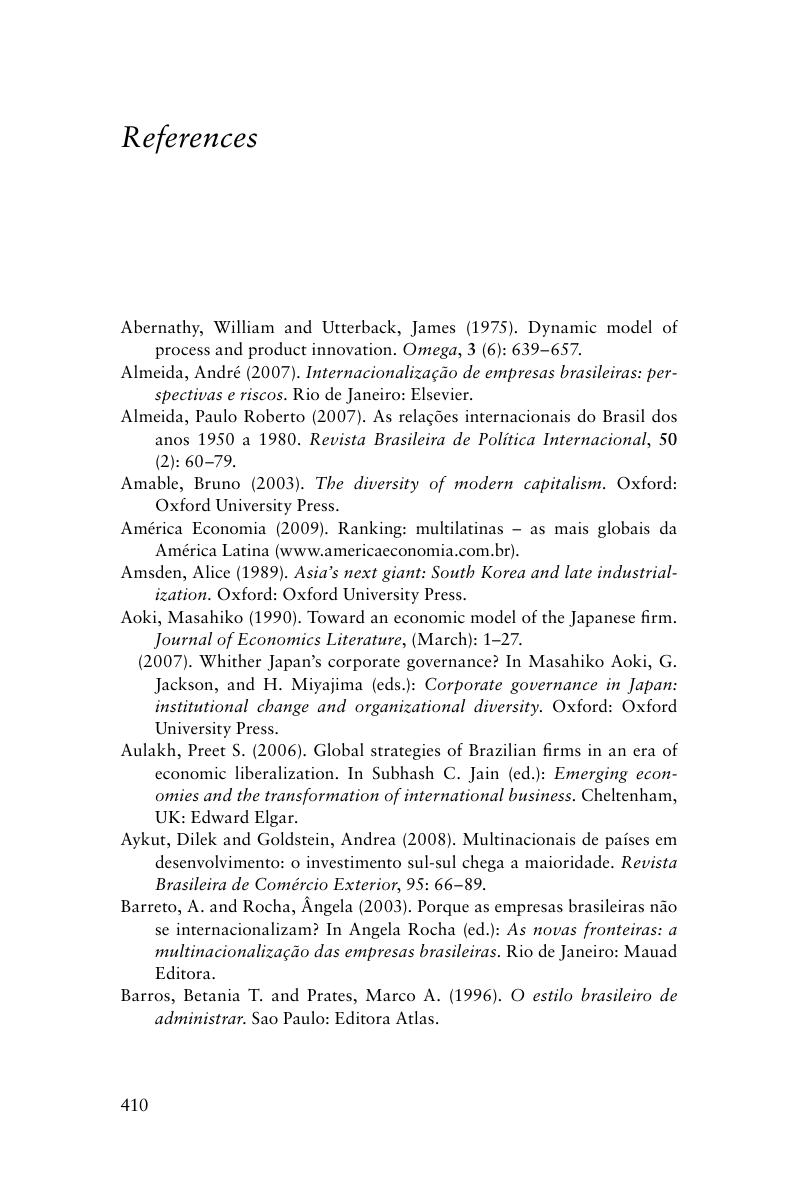References
Published online by Cambridge University Press: 01 March 2011
Summary

- Type
- Chapter
- Information
- Brazilian MultinationalsCompetences for Internationalization, pp. 410 - 427Publisher: Cambridge University PressPrint publication year: 2011



